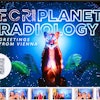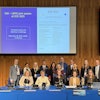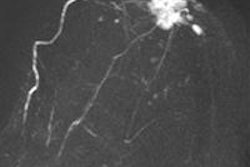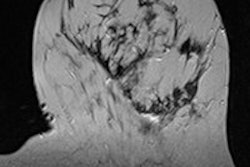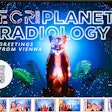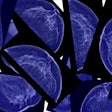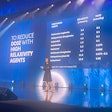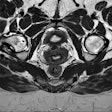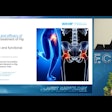
VIENNA - It was every speaker's nightmare. When Dr. Laura Merckel sat down after presenting at Thursday's breast scientific session, her findings were challenged instantly by a member of the audience.
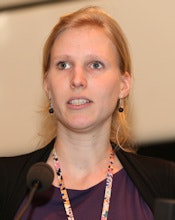 Dr. Laura Merckel from the University Medical Center Utrecht in the Netherlands. Image courtesy of the European Society of Radiology.
Dr. Laura Merckel from the University Medical Center Utrecht in the Netherlands. Image courtesy of the European Society of Radiology.
Merckel, from the University Medical Center Utrecht in the Netherlands, found that 3-tesla breast MRI of mammographically detected microcalcifications is of added diagnostic value, but only by expert radiologists. In experienced hands, the technique has high sensitivity for detecting in situ (> 75%) and invasive cancer (100%) in patients with microcalcifications on mammography, she added.
However, Dr. Clemens Kaiser, a radiologist from the Mannheim Medical Faculty at the University of Heidelberg in Germany, thought the results were highly questionable.
"It's 2013 and the added value of MR mammography today is pretty clear. There are over 1,000 papers out there about the sensitivity and specificity of MR," he said. "Obviously, you miss a lot of DCIS [ductal carcinoma in situ] cases. There are so many signs that help you to decide whether it's DCIS or not."
Kaiser asked Merckel to define what she meant by an "expert reader." She said that in her study, the expert was a medical doctor with a doctorate in breast MRI and extensive research experience. She also noted that, regrettably, no attempt was made either to compare 1.5 tesla and 3 tesla or to look at diffusion-weighted imaging. Furthermore, only diagnostic performance (not therapeutic performance) was considered, and multifocality was not taken into account.
The Utrecht group studied 141 patients with microcalcifications who underwent contrast-enhanced 3-tesla breast MRI before undergoing breast biopsy. A total of 52 of the 141 lesions (37%) turned out to be malignant, and 30 patients had pure DCIS and 22 had mixed or pure invasive breast cancer.
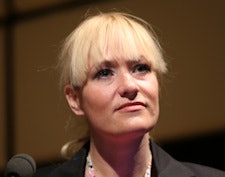 Dr. Katja Pinker-Domenig from the University of Vienna. Image courtesy of the European Society of Radiology.
Dr. Katja Pinker-Domenig from the University of Vienna. Image courtesy of the European Society of Radiology.
In the same session, researchers from the University of Vienna explained why multiparametric 3-tesla MRI of the breast with BI-RADS-adapted reading can improve diagnostic accuracy, when based on established reporting guidelines.
"BI-RADS-adapted reading is fast and easy to use in clinical routine," said Dr. Katja Pinker-Domenig, an associate professor of radiology. "BI-RADS-adapted reading is robust to intra- and interreader variability."
However, no standardized technique currently exists for how to combine the assessment of the morphological, functional, and molecular information from contrast-enhanced MRI and diffusion-weighted imaging (DWI). To optimize the accuracy of multiparametric MRI of the breast with contrast-enhanced MRI and DWI, it is vital to develop a method that efficiently combines the diagnostic information and to maximize specificity without compromising sensitivity, she said.
Therefore, the Vienna team has sought to develop a combined reading for contrast-enhanced MRI and DWI adapted to BI-RADS for multiparametric MRI of the breast at 3 tesla. They also aimed to assess its diagnostic value and also intra- and interreader variability.
Originally published in ECR Today on 8 March 2013.
Copyright © 2013 European Society of Radiology
